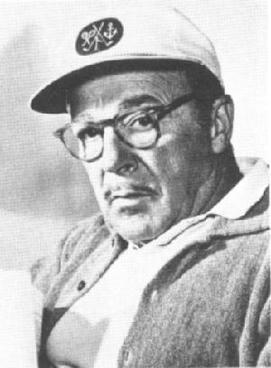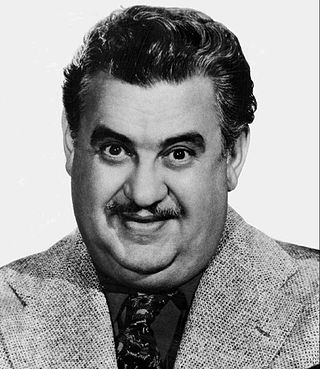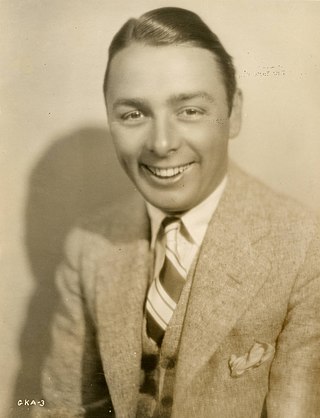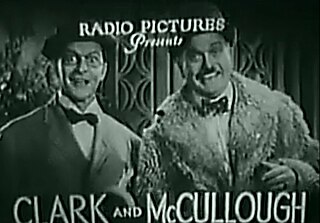
Walter Andrew Brennan was an American actor and singer. He won the Academy Award for Best Supporting Actor for Come and Get It (1936), Kentucky (1938) and The Westerner (1940), making him one of only six actors to win three Academy Awards, and the only male or female actor to win three awards in the supporting actor category. Brennan was also nominated for his performance in Sergeant York (1941). Other noteworthy performances were in To Have and Have Not (1944), My Darling Clementine (1946), Red River (1948) and Rio Bravo (1959). On television, he starred in the sitcom The Real McCoys (1957-1963).
The Van Beuren Corporation was a New York City-based animation studio that produced theatrical cartoons as well as live-action short-subjects from the 1920s to 1936.

Roland Young was an English-born actor. He began his acting career on the London stage, but later found success in America and received an Academy Award nomination for his role in the film Topper (1937).

Gordon Douglas Brickner was an American film director and actor, who directed many different genres of films over the course of a five-decade career in motion pictures.

William Gilbert Barron, known professionally as Billy Gilbert, was an American actor and comedian. He was known for his comic sneeze routines. He appeared in over 200 feature films, short subjects and television shows beginning in 1929.

Edgar Livingston Kennedy was an American comedic character actor who appeared in at least 500 films during the silent and sound eras. Professionally, he was known as "Slow Burn", owing to his ability to portray characters whose anger slowly rose in frustrating situations.

Educational Pictures, also known as Educational Film Exchanges, Inc. or Educational Films Corporation of America, was an American film production and film distribution company founded in 1916 by Earle Hammons (1882–1962). Educational primarily distributed short subjects; it is best known for its series of comedies starring Buster Keaton and the earliest screen appearances of Shirley Temple (1932–34). The company ceased production in 1938, and finally closed in 1940 when its film library was sold at auction.

Walter Leland Catlett was an American actor and comedian. He made a career of playing excitable, meddlesome, temperamental, and officious blowhards.

Daphne Pollard was an Australian-born vaudeville performer and dancer, active on stage and later in American films, mostly short comedies. Between 1928 and 1935 she had almost 60 screen credits.

George E. Marshall was an American actor, screenwriter, producer, film and television director, active through the first six decades of film history.

Hugh Herbert was an American motion picture comedian. He began his career in vaudeville and wrote more than 150 plays and sketches.

John Boles was an American singer and actor best known for playing Victor Moritz in the 1931 film Frankenstein.

Arthur George Brest, known professionally as George K. Arthur, was an English actor and producer, born in Aberdeen, Scotland,. He appeared in more than 50 films between 1919 and 1935, and is best known as the diminutive half of the comedy team of Dane & Arthur.

Robert O'Connor, also known professionally as Robert Emmett O'Connor and Robert E. O'Connor was an Irish-American actor. He had a lengthy career as a stage actor on Broadway and in vaudeville from 1905-1931; using the stage name Robert O'Connor in both musicals and plays. After transitioning to film, he also used the names Robert Emmett O'Connor or Robert E. O'Connor for his screen credits. He appeared in more than 200 films between 1919 and 1950; specializing in portraying policemen. He is probably best remembered as the warmhearted bootlegger Paddy Ryan in The Public Enemy (1931) and as police Sergeant Henderson pursuing the Marx Brothers in A Night at the Opera (1935). He also appeared as Jonesy in Billy Wilder's 1950 film Sunset Boulevard. He also made an appearance at the very beginning and very end of the Metro-Goldwyn-Mayer cartoon short Who Killed Who? (1943).

Robert Edwin Clark, known as Bobby Clark, was an American minstrel, vaudevillian, performer on stage, film, television and the circus. Known for his painted-on eyeglasses, he was part of a comedy team with Paul McCullough for 36 years.

Paul Johnston McCullough was an American actor and comedian who was one half of the comedy duo Clark and McCullough, along with fellow comedian Bobby Clark.

Alibi Bye Bye is a 1935 comedy short directed by Ben Holmes and released by RKO Radio Pictures. It is notable as the final film appearance of the comedy team of Bobby Clark and Paul McCullough.
Tremlet C. Carr was an American film producer, closely associated with the low-budget filmmaking of Poverty Row. In 1931 he co-founded Monogram Pictures, which developed into one of the leading specialist producers of B pictures in Hollywood.
















